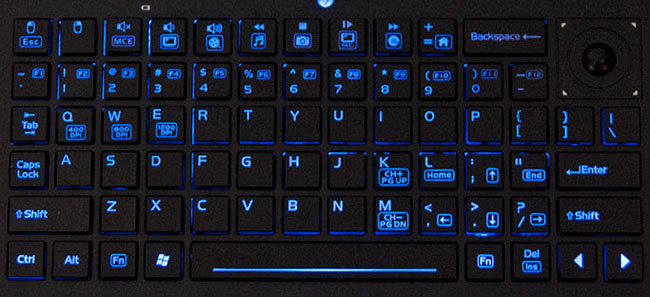Originally, computer monitors were used for data processing while television receivers were used for entertainment. From the 1980s onward.
Monitor's hostory: Early electronic computers were fitted with a panel of light bulbs where the state of each particular bulb would indicate the on/off state of a particular register bit inside the computer. This allowed the engineers operating the computer to monitor the internal state of the machine, so this panel of lights came to be known as the 'monitor'. As early monitors were only capable of displaying a very limited amount of information, and were very transient, they were rarely considered for programme output. Instead, a line printer was the primary output device, while the monitor was limited to keeping track of the programme's operation.
Monitor's hostory: Early electronic computers were fitted with a panel of light bulbs where the state of each particular bulb would indicate the on/off state of a particular register bit inside the computer. This allowed the engineers operating the computer to monitor the internal state of the machine, so this panel of lights came to be known as the 'monitor'. As early monitors were only capable of displaying a very limited amount of information, and were very transient, they were rarely considered for programme output. Instead, a line printer was the primary output device, while the monitor was limited to keeping track of the programme's operation.
 http://ecx.images-amazon.com/images/I/81FJa00A3yL._SL1500_.jpg
http://ecx.images-amazon.com/images/I/81FJa00A3yL._SL1500_.jpg
Mouse- is a pointing device that detects two-dimensional motion relative to a surface. This motion is typically translated into the motion of a pointer on a display, which allows for fine control of a graphical user interface.
Physically, a mouse consists of an object held in one's hand, with one or more buttons. Mice often also feature other elements, such as touch surfaces and "wheels", which enable additional control and dimensional input.The trackball, a related pointing device, was invented in 1941 by Ralph Benjamin as part of a post-World War II-era fire-control radar plotting system called Comprehensive Display System (CDS). Benjamin was then working for the British Royal Navy Scientific Service. Benjamin's project used analog computers to calculate the future position of target aircraft based on several initial input points provided by a user with a joystick. Benjamin felt that a more elegant input device was needed and invented a ball tracker called "roller ball", for this purpose.[5][6]
The device was patented in 1947,[6] but only a prototype using a metal ball rolling on two rubber-coated wheels was ever built[5] and the device was kept as a military secret.[5]
Another early trackball was built by British electrical engineer Kenyon Taylor in collaboration with Tom Cranston and Fred Longstaff. Taylor was part of the original Ferranti Canada, working on the Royal Canadian Navy's DATAR (Digital Automated Tracking and Resolving) system in 1952.
 http://www.computershopper.com/var/ezwebin_site/storage/images/media/images/best-wireless-mice-hp-touch-to-pair-mouse/1102560-1-eng-US/best-wireless-mice-hp-touch-to-pair-mouse_400-Wide.jpg
http://www.computershopper.com/var/ezwebin_site/storage/images/media/images/best-wireless-mice-hp-touch-to-pair-mouse/1102560-1-eng-US/best-wireless-mice-hp-touch-to-pair-mouse_400-Wide.jpg
Keyboard- s a typewriter-style device, which uses an arrangement of buttons or keys, to act as mechanical levers or electronic switches. Following the decline of punch cards and paper tape, interaction via teleprinter-style keyboards became the main input device for computers.
A keyboard typically has characters engraved or printed on the keys and each press of a key typically corresponds to a single writtensymbol. However, to produce some symbols requires pressing and holding several keys simultaneously or in sequence. While most keyboard keys produce letters, numbers or signs (characters), other keys or simultaneous key presses can produce actions or execute computer commands.
 http://www.everythingusb.com/media/iogear-mini-wireless-keyboard-backlit.jpg
http://www.everythingusb.com/media/iogear-mini-wireless-keyboard-backlit.jpg
Central Processing Unit (CPU) - is the electronic circuitry within a computer that carries out the instructions of a computer program by performing the basic arithmetic, logical, control and input/output (I/O) operations specified by the instructions. The term has been used in the computer industry at least since the early 1960s.[1] Traditionally, the term "CPU" refers to a processor, more specifically to its processing unit and control unit (CU), distinguishing these core elements of a computer from external components such as main memoryand I/O circuitry.[2]
The form, design and implementation of CPUs have changed over the course of their history, but their fundamental operation remains almost unchanged. Principal components of a CPU include the arithmetic logic unit (ALU) that performs arithmetic and logic operations,processor registers that supply operands to the ALU and store the results of ALU operations, and a control unit that fetches instructions from memory and "executes" them by directing the coordinated operations of the ALU, registers and other components.
Most modern CPUs are microprocessors, meaning they are contained on a single integrated circuit (IC) chip. An IC that contains a CPU may also contain memory, peripheral interfaces, and other components of a computer; such integrated devices are variously calledmicrocontrollers or systems on a chip (SoC). Some computers employ a multi-core processor, which is a single chip containing two or more CPUs called "cores"; in that context, single chips are sometimes referred to as "sockets".[3] Array processors or vector processorshave multiple processors that operate in parallel, with no unit considered central.
Joystick - is an input device consisting of a stick that pivots on a base and reports its angle or direction to the device it is controlling. A joystick, also known as the control column, is the principal control device in the cockpit of many civilian and military aircraft, either as acenter stick or side-stick. It often has supplementary switches to control various aspects of the aircraft's flight.
Joysticks are often used to control video games, and usually have one or more push-buttons whose state can also be read by the computer. A popular variation of the joystick used on modern video game consoles is the analog stick. Joysticks are also used for controlling machines such as cranes, trucks, underwater unmanned vehicles, wheelchairs, surveillance cameras, and zero turning radius lawn mowers. Miniature finger-operated joysticks have been adopted as input devices for smaller electronic equipment such as mobile phones.
 http://onlinemca.com/mca_course/kurukshetra_university/semester5/computergraphics/img_computer_graphics/joystick.jpg
http://onlinemca.com/mca_course/kurukshetra_university/semester5/computergraphics/img_computer_graphics/joystick.jpg
Walang komento:
Mag-post ng isang Komento